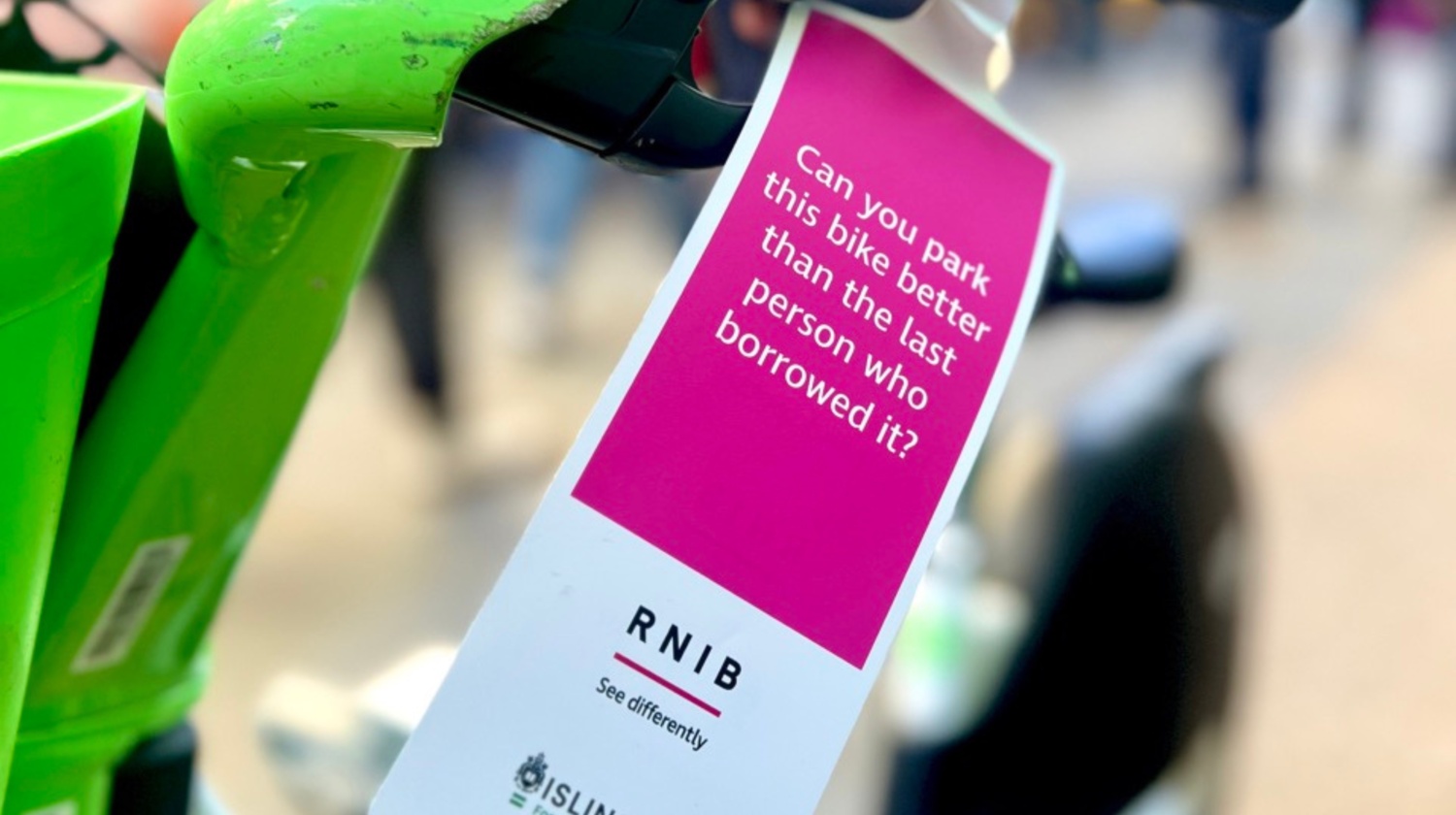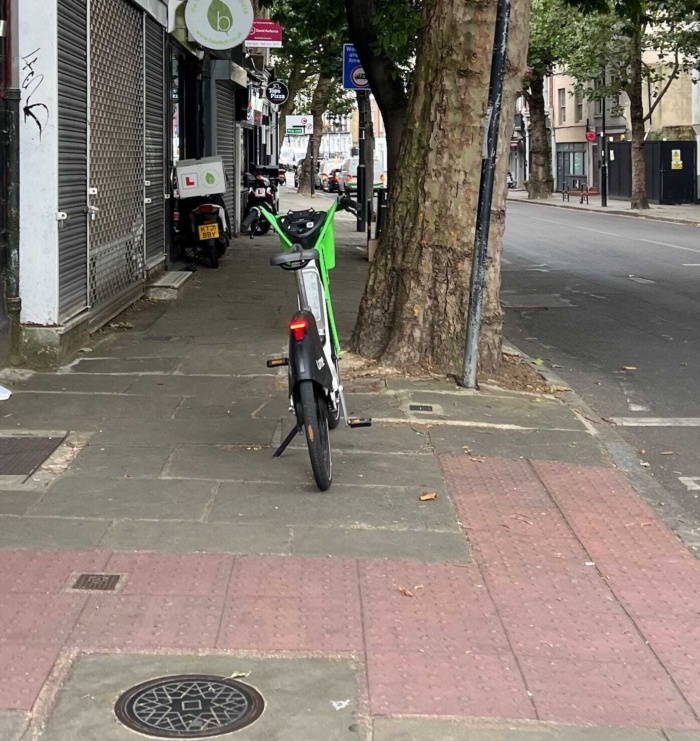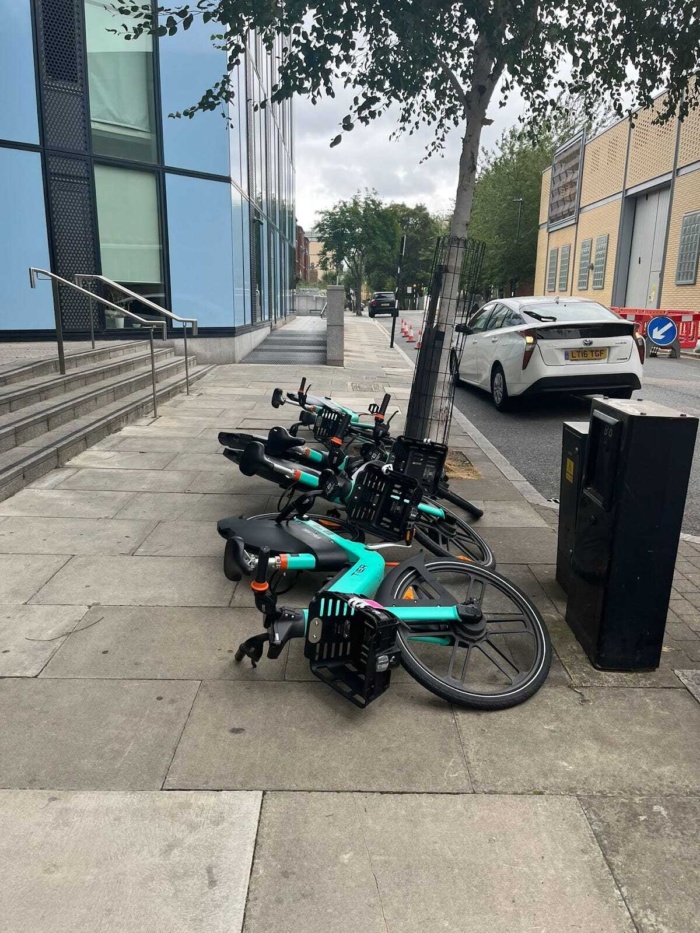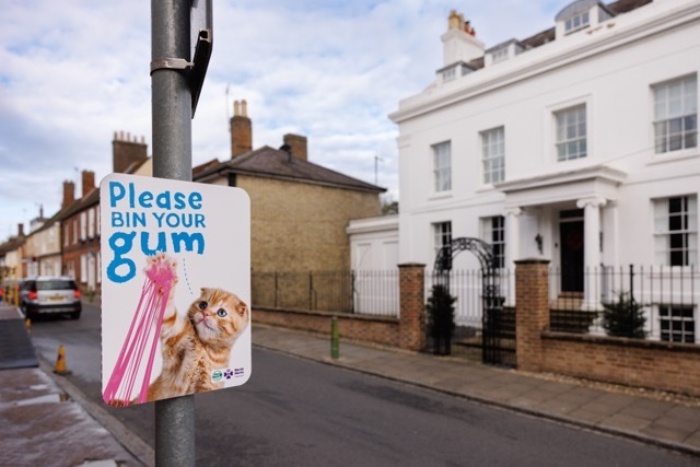
If you live in a city, you’ll likely have noticed more and more hire bikes flooding the streets in recent years. A step up from Boris Bikes, these new dockless varieties have been designed only with the convenience of cyclists in mind, where you can hop off and leave the bike wherever you want, ready to be picked up by the next user. But the rise of these bikes means the rise of irresponsible parking — with many left in the middle of narrow pavements or laid sprawled across paths, making it difficult to walk through.
When the Royal National Institute for Blind People (RNIB) asked us to help improve public perceptions and behaviours towards blind and partially sighted people, it wasn’t surprising that our research revealed badly parked bikes to be one of the most problematic frustrations. And they aren’t just a menace for blind and partially sighted people — obstructing hire bikes cause problems for wheelchair users, parents with prams, or anyone with mobility issues. These bikes make it dangerous for many to walk alone — causing accidents or forcing people onto busy roads to get around.
With the government target of “50% of trips in England’s towns and cities to be walked, wheeled or cycled by 2030” it doesn’t look like these bikes are going anywhere. We had to instead figure out a way to get users to park them better. Our (lack of) conversations with major hire bike companies made it clear they weren’t going to improve things themselves, so it was up to us. Following our usual formula of getting as close as possible to the behaviour we want to change, we developed bike tags to go on badly parked hire bikes challenging the next cyclist to do a better job of parking.
We designed a pilot to test these tags, coinciding with RNIB’s move to Islington where more blind and partially sighted people would be travelling to and from the office. “How can you possibly measure whether your tags led to better bike parking?” I hear you ask. Well, we are no strangers to innovative evaluation methods, which you’d know if you’re familiar with our Gum Litter Work. With our evaluation partners, we designed a streetwalk route beginning at King’s Cross Station, and going towards RNIB’s office and surrounding areas, mimicking routes blind and partially sighted employees and visitors to RNIB might follow. Then, with a camera strapped to them, our evaluators walked this route — 3 times a week for 12 weeks at different times of day. Obstructions were counted from the hours and hours of footage watched so we could detect changes across the 12 weeks.
Some initial walks were done to capture baseline data, but once the intervention period began, we got to work. Armed with tags and purpose, myself, Rob and Aimée took to the streets of Islington and, not to our surprise, exposed hire bikes as the most common pavement obstruction in the area. From bikes being left in the middle of the pavement, waiting to be walked into…

To being dumped in a pile on the ground for someone to trip over…

No badly parked bike was left without our mark. Combined with our other pavement obstruction interventions, targeted signage and local engagement, we reduced bike obstructions by 62% in the first 3 weeks. Cyclists became more considerate about keeping pavements clear to help make travelling through Islington safer for everyone.
This project was in collaboration with RNIB, Islington Council, Groundwork London, Freshwater Strategy and The&Partnership. Click here if you’re interested in learning more about it.
Or, if you have a behavioural challenge you think is impossible to tackle, reach out and let us help.
Share
RELATED ARTICLES
Projects

Ideas that stick!
Getting ready to kick off year 2 of a five year scheme to reduce gum litter in the UK
03/02/23
Read moreProjects

Are you hearing us?
How we optimised RNID's online hearing check ahead of their successful Check Your Hearing campaign
12/10/22
Read moreBehavioural science

Return to the bike: a journey in behavioural science
Aimée shares what behavioural science tools she uses to commit to her cycling goals
08/01/24
Read more